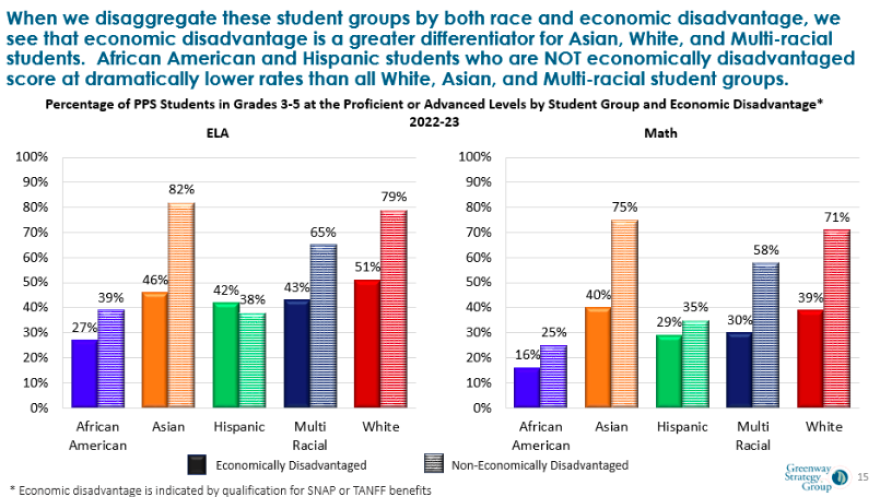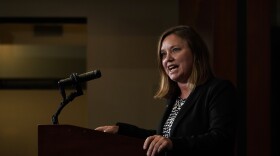Leaders at Pittsburgh Public Schools want to improve the quality of the district’s academics and reconfigure school facilities, according to a preliminary framework for the district’s five-year strategic plan.
The proposal released Wednesday centers on four thematic goals:
- Improve the quality and relevance of academic experiences
- Create safe, engaging and inclusive school environments
- Transform the district’s facility footprint
- Prioritize community outreach and access
The district looks to use these themes to create action items for the next five years, though a final plan won’t emerge until May 2024.
The initial draft framework instead names several preferred equitable outcomes and measurable objectives, including improvements to building conditions and infrastructure, efforts to optimize school resources and school consolidations.
In a presentation to school board members Wednesday night, Martha Greenway with Greenway Strategy Group emphasized several times that school closures — one strategy the district could utilize to accomplish its goals — won’t necessarily be a part of the strategic plan.
According to a presentation by the PPS facilities staff last month, the district currently operates at just 54% of its total building capacity, with nearly 17,000 empty seats.
“The strategic plan itself is not going to make recommendations about specific school configurations or specific school consolidations, but it is going to provide strategic initiatives through which that work will happen,” Greenway said.

PPS awarded a $110,000 contract to Greenway Strategy Group in April to develop a five-year strategic plan. Since then, the organization has conducted nearly two dozen focus groups with students, parents, administrators and community partners to determine the district’s priorities.
To collect additional feedback on the proposed framework, school leaders will host virtual town halls on Dec. 12 and 15.
The district announced on Dec. 12 that it would hold two additional town halls on the evenings of Jan. 10 and 11. Community members can also weigh in via a survey on the district’s website through Jan. 19, now offered in several languages.
The district will, too, meet with several community groups to gather feedback from their members: 412 Justice, the Education Partnership, Center of Life, the Pittsburgh Project, Brothers and Sisters Emerging, the PEAL Center, the Latino Community Center, Trying Together, Gwen’s Girls and the Black Girls Equity Alliance.
Feedback gathered will be presented to the school board in January, when the board is expected vote to approve the district’s strategic plan framework. From there, administrators and community experts will establish strategy teams to develop implementation plans for each objective.
District leaders want to eliminate persisting racial disparities
The goal, according to the draft framework, is to create programs that connect students with community resources, ensure students are engaged with their school community and eliminate racial disparities in student performance.
White students in the district consistently perform better on state tests than their Black peers, and that gap continues to widen in subjects like math.
According to an analysis by Greenway Strategy Group — which also worked with the district on its 2017 strategic plan — those race-based disparities remain, even when comparing students with similar economic backgrounds.

An analysis of student suspension data illustrated further stark disparities: During the 2022-2023 school year, nearly one in five Black students (19.4%) in the district were suspended at least once, compared to just 6.8% of white students.
Students with disabilities and economically-disadvantaged students also saw suspension rates above 15%.
“If you’re not in the classroom learning, then you’re losing out in that education,” school board director Devon Taliaferro said. “How can you improve in achievement if you’re not in the classroom?”
The district two director also raised concerns over the district’s proposal to “consolidate schools to maximize resources.”
“I have parents in my district, specifically, who value smaller class sizes,” Taliaferro added. “I don’t see how you get to smaller class sizes by consolidating.”





